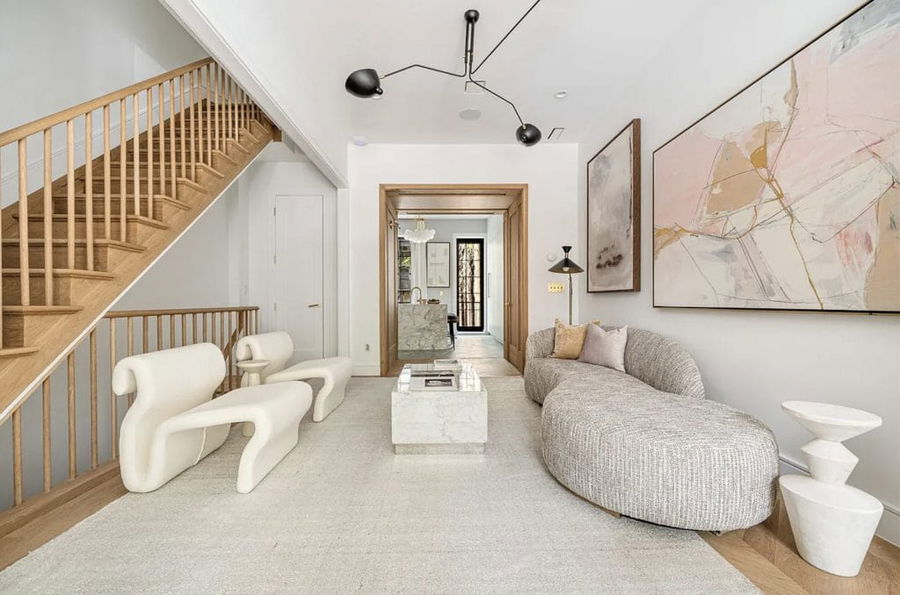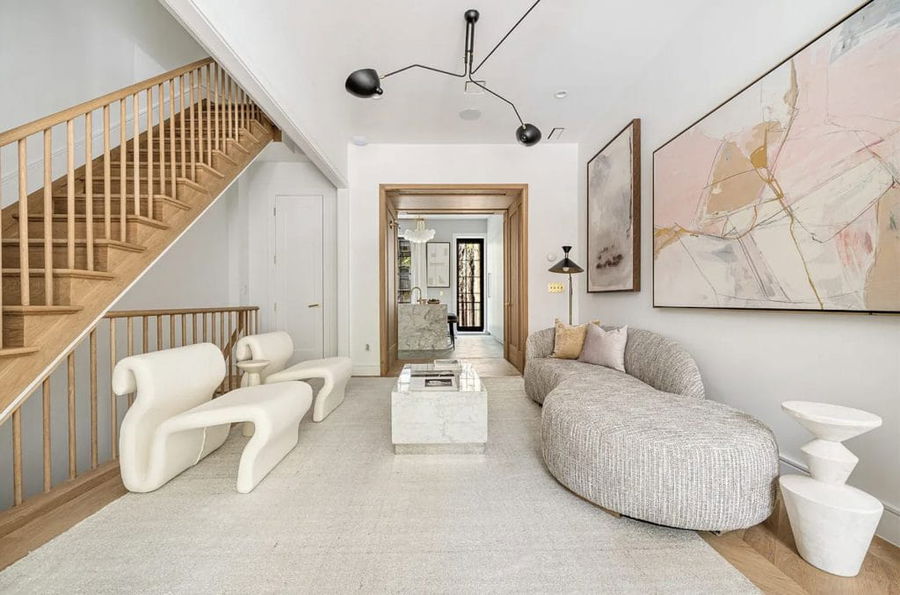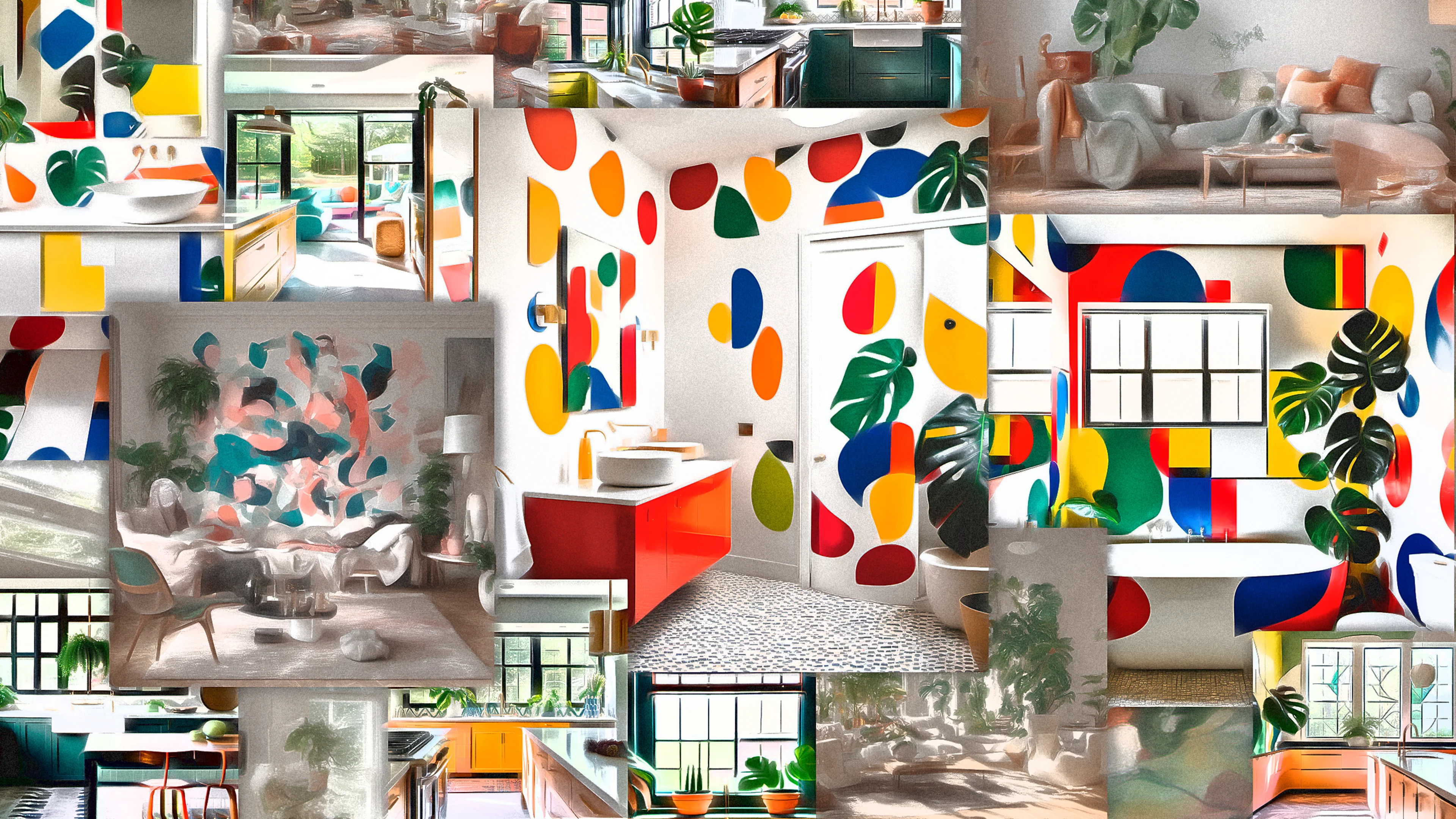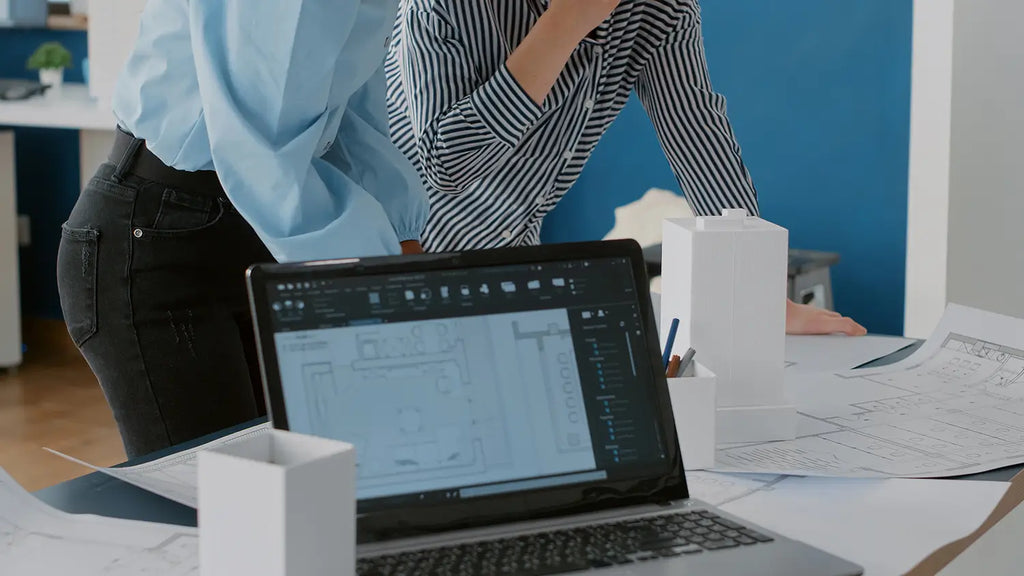Have you ever wondered, Will AI replace Interior Designers? As technology evolves, this question buzzes louder in creative circles. In this post, we’ll unravel the role of AI in interior design, exploring its capabilities, limitations, and how it might reshape this artistic profession.
We'll dive into what aspects of interior design AI can tackle, the human elements it can’t replicate, and how designers can adapt to this technological wave. Get ready to discover whether AI is a friend or foe in transforming spaces, and what that means for the future of interior design!
Table of contents
Designers Weigh In: AI's Role in the Creative Process
The buzz around AI taking over jobs has naturally reached the interior design world, yet many professionals share a clear perspective: AI is a powerful tool, not a replacement. Industry experts broadly agree that while AI undeniably changes how we approach design, it cannot fully substitute human interior designers. At Amina Design Co., they view AI as an enhancer of creativity, not a threat to their jobs, a sentiment echoed across the industry.

Credits: Decorilla.com
At its core, interior design is deeply personal, requiring a nuanced understanding of client preferences, emotions, and unique stories. AI struggles to replicate the empathy and intuition needed to craft truly personalized spaces or engage in the complex give-and-take of client collaboration, as noted by Decorilla. Experts, like Diana Hathaway, highlight AI's difficulty in creating inviting and functional spaces that grasp emotional resonance.
However, designers are not dismissing AI; they view it as a valuable partner for tasks like generating 3D models, suggesting color palettes, and streamlining project management. While some worry new designers might rely too heavily on AI without honing their skills, others see it expanding the market and freeing up time for human-centric design aspects like building trust and managing project complexities. Ultimately, the human element of relationship building and project management remains unmatched, as highlighted by Tina Flint Studio and Centered By Design.
What Parts of Interior Designer Are Being Replaced by AI?
AI is making its mark in interior design by taking over several routine and technical tasks, allowing designers to focus more on their creative work. For instance, AI tools can automate tasks like generating 3D visualizations, organizing design layouts, and selecting materials based on client preferences. According to a comparative study of generative AI models, AI can convert simple sketches into detailed renderings, significantly reducing the time spent on initial concepts.
Moreover, AI enhances space optimization by analyzing room arrangements and suggesting optimal layouts, making efficient use of space while considering aesthetics and functionality. As noted in a study on AI integration in interior design, AI can generate bespoke designs that match individual client needs, streamlining the customization process.
Despite these advancements, the role of human designers remains crucial. AI struggles with tasks that require emotional intelligence and a personal touch, such as understanding client emotions and creating personalized spaces. A discussion on Quora points out that AI is unlikely to replace the nuanced decision-making and interpersonal skills that human designers bring to the table.
Aspects of Interior Design That AI Cannot Replace
Interior design is not just about creating beautiful spaces; it involves deeply understanding human emotions and needs. Designers build relationships with clients, interpreting their desires and preferences to craft spaces that evoke personal connections. As noted in Decorilla, AI lacks the ability to grasp the nuanced emotional responses that inform design decisions, making the human touch irreplaceable.

Credits: Decorilla
Moreover, the collaborative nature of interior design requires strong communication skills. Designers must navigate client feedback, budget constraints, and unexpected challenges through empathy and adaptability. According to insights from Palazzo, this dynamic interaction is something AI cannot replicate, which is fundamental in delivering tailored design solutions that truly resonate with clients.
How Interior Designers Can Adapt to AI
The role of interior designers is evolving with the integration of AI tools that streamline design processes. Designers like Kelly Wearstler have adopted generative AI to enhance the schematic and conceptual phases of projects, enabling faster idea generation and exploration. This shift allows designers to focus on creative aspects while AI handles repetitive tasks, as highlighted by Fast Company.

Credits: Fast Company
To keep pace, interior designers should familiarize themselves with popular AI platforms such as Planner 5D and Homestyler, which aid in creating realistic renderings quickly. Additionally, learning to leverage augmented reality (AR) and virtual reality (VR) can transform client presentations, letting them experience designs in immersive environments. By focusing on enhancing spatial thinking skills and mastering new technologies, designers will better position themselves in this rapidly changing landscape, as emphasized by Marymount University.
Current job market for Interior Designers in the US
As of May 2025, there are approximately 26,000+ job openings for interior designers in the United States, according to LinkedIn. This figure highlights a vibrant job market, with roles ranging from junior to senior positions across various specializations such as residential, commercial, and freelance design. The demand remains strong, particularly in urban centers where creative talent and large client bases converge.

Credits: All Art Schools
The job outlook for interior designers is projected to grow about 4% by 2033, mirroring the average growth rate across occupations. With around 7,800 new openings each year primarily due to workforce turnover, there are many opportunities for aspiring designers. Those with a bachelor's degree and strong skills in client consultation and project management are particularly well-positioned in this competitive market.
Is Interior Designer AI safe?
The question of whether interior designers are safe from AI has many layers. While AI can assist with tasks like generating 3D models or suggesting color palettes, it lacks the ability to understand human emotions, cultural contexts, and personal aesthetics, which are vital for successful designs. As noted by Tina Flint Studio, interior design involves a depth of knowledge and experience that AI cannot replicate, especially in executing actual projects.

Credits: Kreafolk
Moreover, the role of an interior designer extends beyond aesthetics to include client interaction, project management, and problem-solving. According to Kreafolk, designers excel at interpreting client needs and transforming vague ideas into functional spaces, which requires empathy—something AI simply cannot offer. Thus, while AI can enhance certain processes, it is unlikely to fully replace the unique value that human designers bring.
Hiring an Interior Designer? Here's what to look for
When seeking an interior designer, focus on their blend of creativity and technical proficiency. Key skills include software expertise in tools like AutoCAD and SketchUp, as well as project management capabilities. Designers should also be adept at understanding client needs and translating those into actionable design plans. Using Adaface tests can streamline your candidate screening process by objectively assessing these essential skills.
Moreover, with the rise of AI tools in design, look for candidates who can integrate technology into their workflow. They should demonstrate familiarity with AI design tools, enhancing their creativity while maintaining practical design solutions. The Generative AI Test from Adaface can help you gauge their ability to adapt to these advancements effectively, ensuring you find a future-ready designer.
Prompt Engineering Test
Generative AI Test
Interior Designer Test
Designing Tomorrow: The Limitless Potential of AI for Interior Designers
For current interior designers, the horizon with AI is not one of replacement, but immense empowerment. AI tools now handle tedious tasks, like generating 3D renderings and initial concepts, freeing up time for unique creative work and stronger client relationships, as highlighted by A New Creation Interiors. This partnership allows designers to focus on crafting truly personal spaces, making the role more engaging.

Credits: GrowUp Green
AI also boosts productivity by speeding up visualization and personalization, enabling designers to explore more options and deliver innovative solutions faster. For employers, hiring Interior Designers who leverage these tools means accelerating project timelines and delivering remarkable client experiences. This technological integration expands the design market, making high-quality services more accessible and diverse than ever before, a sentiment echoed by Palazzo.ai.
Looking ahead, the future of interior design is a dynamic collaboration where human intuition, empathy, and artistic vision unite with AI's analytical capabilities. This synergy unlocks opportunities for more imaginative designs and deeper client connections, transforming challenges into exciting new avenues for growth, as discussed by nssmag.com. Embrace AI; it means stepping into a future where creativity knows no bounds for both professionals and those dreaming of better spaces.

40 min skill tests.
No trick questions.
Accurate shortlisting.
We make it easy for you to find the best candidates in your pipeline with a 40 min skills test.
Try for freeRelated posts



